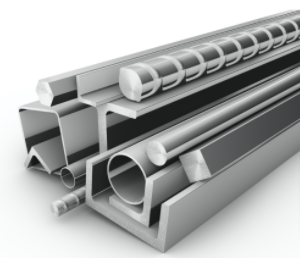The steel prices have witnessed a rise in the past few months. Steel manufacturers have finally been able to breathe a sigh of relief and get some respite from the declining revenues and postponing of their capital expenditure plans. By the beginning of the festive months, it was largely believed by the producers and users alike the decline in activities has phased out as the destocking process was complete. This perception led to the gradual rise in the steel rates in the market.
In the beginning, the push for the rise in prices that led to the steel rate today, emerged from the growth of global steel prices of iron ore and coking coal from the raw materials industry. Just like other commodities, metal prices tend to shift regularly and impact business lines and adjacent industries. Here, we look at some of the major factors that impact steel prices today and lead to a shift in the system.
- Supply and demand: Just like any other industry, the steel industry is also impacted by the demand and supply of the product. The higher the demand, the less there is to supply which results in a rise in prices. The same is true in a reverse situation. These prices are not just determined by the current scenario of demand or supply but also by the future demand and supply scenarios. The more insights the industry workers have, the better are the predictions. This makes the prices less volatile. Another factor that impacts the demand supply is the inventory in the supply chain. Being aware of the inventory is essential as it can decouple the demand and supply balance in the short term.
- Industry Trends: The fluctuation in prices is hugely impacted by the trends running in the industry as well. For example, if the auto industry is doing well and strong enough, the demand for steel would rise. The same stands true in the packaging and construction business among others. Industry experts pay close attention to these trends and help predict the monetary situation for all the raw materials used in the manufacturing process.
- Shipping cost: Material used in production of steel and other finished good can be expensive to transport and ship. This is an essential factor in determining today’s steel rate. Shipping of goods involves a number of variable factors such as politics, customs, labour cost and fuel. It is also important to cater for the risks associated with the shipping and packaging of goods. A way to manage these is to select a freight method that involves a longer transit time for a volatile steel market.
- Cost of material: Steel production involves two main materials, namely scrap metal and iron ore. In cases, where the existence of these resources is limited, the demand always exceeds the supply, thus resulting in a steep rise in the cost of materials. Along with this, tracking the energy costs can help study the mill cost structures as well as the market conditions. Melting steel and producing other products requires high energy, which needs to be catered for while calculating the cost.
- Time of the year: The time of the year that you are currently functioning in has a lot of impact on the prices. This is true for all industries across the globe. Holidays, seasonal highs, weather conditions are all variable factors that contribute to the fluctuation of prices of steel. Seasonality also impacts the transit modes and shipping patterns. Such as the holiday season is heavily packed and would ultimately lead to a rise in prices of all the steps from procurement of raw materials to the final product reaching the consumer.

The cost increase in the raw materials coupled with the perception of bottoming out that was seen in a consumer’s survey conducted by the RBI and other agencies indicated that the purchasing managers in the steel industry perceived that the deterioration had ceased, reflecting in a positive growth for the circulation of money in the industry.
Another factor that has resulted in the rise of steel rates is the expectation build up for the reversal of the downward wave. This wave is impacted by the economic reforms in certain critical sectors and stimulus measures related to a rise in public investment in infrastructure in the latest Budget, which led to a build-up in business sentiments.
A combined impact of all the above factors has resulted in the rise of steel prices today in India.


